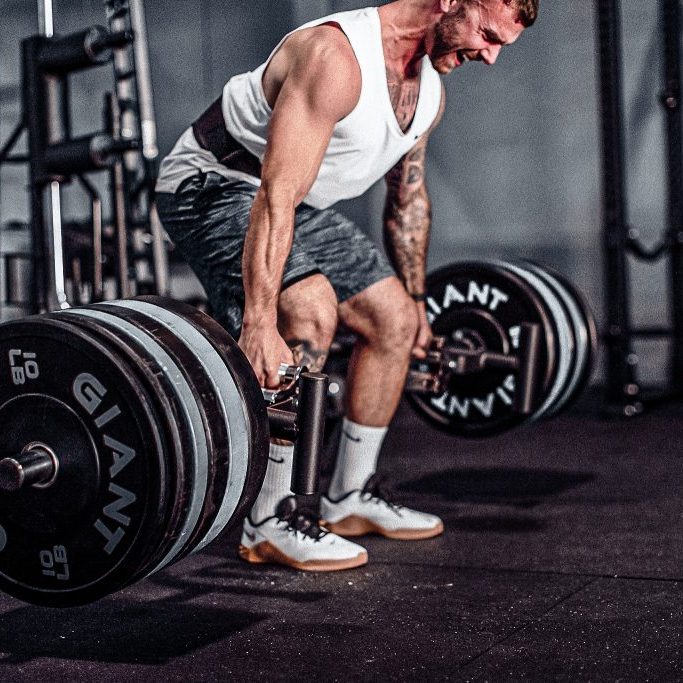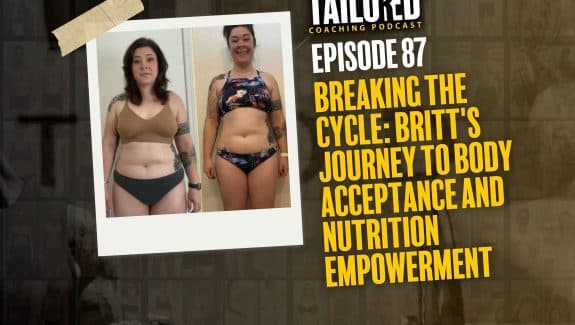Cluster Sets are a training method that has been around for a VERY long period of time and can be implemented into a strength focused or hypertrophy focused (muscle growth) training protocol.
I first heard of Cluster Sets from Christian Thibaudeau, founder of Thibarmy, when I was a brand new strength coach around about 18 or 19 years old, which was 11-12 years ago as I write this article – yet I’m still using them to this day, in my own training, the training programs I write for our members in the Tailored Trainer App, and for our private 1:1 clients at Tailored Coaching Method.
So as you can tell… they’re a very useful tool to have in your coaching tool belt!
Cluster Set Table of Contents |
WHAT ARE CLUSTER SETS?
Cluster Sets are a series of low rep sets, done with short intervals between reps, repeated over the course of numerous full sets. Originally they were only used with singles and eventually doubles and triples, but after years of training program design advancements they’ve been used with higher rep ranges to target hypertrophy more than strength.
An example of this, so you can visualize it, would be to perform 5 singles on a compound lift, say the Bench Press or Trap Bar Deadlift, with only 10-20 seconds between each rep.
Once you complete all 5 mini-sets of those singles, you would rest a full 3-5 minutes before beginning another full cluster set.
See, each cluster is a single and per each set you would do 5 clusters, with that short rest interval between. However a full set would be performed by doing all 5 of the cluster sets (in series). This means every set has 5 total reps once completely. But each cluster only has 1 single rep.
Here’s an example you can visually watch:
In that video, I’m performing 3 clusters of 3 reps with the overhead press. I perform 3 reps, rest 10 seconds, perform 3 more reps, rest another 10 seconds, and perform my final cluster of 3 reps to finish off the working set.
WHAT MAKES CLUSTER SETS SO EFFECTIVE?
Now you might be wondering… what makes a cluster set so effective?
Well, there are a few reasons why these are highly effective for maximizing strength and, although it wasn’t originally created as a hypertrophy method, for maximizing muscle growth as well.
1.) A cluster set is performed with a high percentage of your 1RM, which allows you to train closer to your maximum.
- This is beneficial for overall strength gains because research, as well as plenty of anecdotal evidence, has shown that training at a submaximum level is actually better for increasing strength. This is because when training at or above about 80% of your 1RM, you’re likely to see the same strength adaptations that you would see when training at 95-100% of your 1RM. However, this is far less taxing on your nervous system and far less likely to cause any injuries to your joints. Training at 100% is purely to show off or to express your strength in competition; otherwise it serves no valuable purpose in your training.
2.) Because clusters are trained at a sub-maximal effort, yet allow for a short rest interval between each cluster, you’re able to train at that submax level of effort and intensity (load) with more total volume.
- This is because you’re going to perform these reps with a percentage of your 1RM that could be done for more reps than each cluster, but less reps than the total set requires. For example, a normal sub max 5 rep set might be done at between 80-85% of your 1RM. However, you’re going to use that 80-85% of your 1RM load for just 3 reps… Simple, right? Now do that 3 times with short rest periods in between each cluster… and repeat that for a total of 3-4 rounds. Now you’ve used 80-85% of your 1RM to accomplish 9 reps, instead of just 5, AND repeated it for 3-4 rounds. This leads to greater volumes and adaptations.
3.) One of the reasons this works well for hypertrophy (muscle growth) is because of the fast twitch muscle fiber recruitment that happens early on in the set.
- Fast twitch fibers are known to be bigger, stronger, and more powerful. These are what the freak-like athletes are mainly comprised of and exactly what we all want to be comprised of as well, in order to look great (and be insanely strong). Well these are only going to be recruited and maximally developed by training with lower reps (because intensity {load} will be greater) or at the tail end of a set (because reaching near failure begins recruiting them). Problem is, with low rep sets we have lower volume – but high volume totals is what leads to more muscle growth – and we have to push sets near failure in order to stimulate them in anything that’s not a low rep set. But with clusters, you recruit them immediately since you’re training with heavier loads AND you develop them better because you’re training with them fully recruited during the entire duration of the sets.
4.) Next reason, and one that most people are unaware of or don’t even consider when training due to it being on more of the physiological side of things, is the Golgi Tendon Organ’s response to this type of training.
- The Golgi Tendon is a proprioceptor that receives information from the tendon when maximal amounts of tension are being created. When the Golgi Tendon senses too much tension, it signals the muscle to relax, essentially. This loses tension in the muscle and can cause it to stop firing how we want it too. Basically, it’s a defense mechanism for us to stop before we get hurt while lifting. Which is a great thing, because we can’t lift at all if we get injured! However, cluster sets can help us here by inhibiting the Golgi Tendon from prematurely acting, which is usually common only in lifters’ who are less experienced with maximal loads. This can help improve your intramuscular coordination and simply get you used to lifting heavy weight.
5.) The last reason I believe these are so effective is because they’re challenging and fun!
- People often neglect the aspect of fun inside the gym and being properly challenged, consistently. But if you do not push yourself hard, you will a.) not get adequate results because your level of effort dictates the results you see and b.) you won’t get the reward sensation you receive after accomplishing a difficult task. As far as having fun… Well, if you’re not enjoying the training you’re doing I can promise you that you will not be consistent with your training! And that’s by far the most important factor in seeing long term results.
MAXIMIZE INTENSITY, WHILE CONTROLLING RECOVERY
We can summarize all the above with one statement…
Cluster Sets allow you to maximize training adaptations for both strength and hypertrophy by safely performing sub-maximal effort lifts in a series of clusters, increasing the total volume performed each workout, and developing more high threshold muscle fibers and motor units.
To me, this is another way of saying — “Cluster Sets are the best way to program compound lifts for anyone who wants to not only look like a jacked athlete, but also FEEL and PERFORM like a jacked athlete would.”
We can increase our maximal strength.
We can increase recruitment of fast twitch fibers.
We can increase volume without sacrificing strength.
We can avoid injury by spacing them out enough to know your limit.
We can even train our body to be more responsive to training.
All with Cluster Sets!
However… There is one potential downside to discuss before teaching you how to program these into your workouts….
They’re brutal AS F#$K.
Now, some of you probably read that and get MORE excited to use Cluster Sets.
And some of you may be ready to exit out of this article right now.
But let me just say this; ALL of the greatest training methods impose the greatest amount of stress and therefore also require the greatest amount of recovery, too.
So you shouldn’t be worried, you should just be cautious.
Cluster Sets are basically a loophole to be able to safely do what we always tell lifters not to do… We often tell lifters they can choose intensity (heavy loads; strength focused) or volume (higher reps/sets; muscle growth focused), but NOT both. If you mix both, you will burn out or get injured (or both).
However, cluster sets allow us to do this safely! It’s just important to be aware of the demand this has on your muscles, joints, and neurological system. Because if you do too many cluster sets throughout the training week, never deload, or do too much overall volume – you will likely ramp up adrenaline too much and increase lingering cortisol levels, which are the excitement and stress hormones in the body. When these are elevated too often or for too long, you will experience extreme fatigue and sometimes even depressive symptoms. Then you will need to completely take time off training, be that a single week or up to a month for some, in order to come back to your normal, fully recovered self.
Now, this is EASY to avoid. So don’t freak out! Just don’t do too much; PERIOD.
And you’ll be able to tell if you’re doing too much, if you’re starting to be less motivated to go to the gym or are experiencing a “tired and wired” feeling each and every day.
Being unmotivated out of nowhere is a neurological signal that your fatigue level is too high and you need to deload.
The experience of being tired and wired is when you are tired and groggy all day, yet when you lie down in bed to fall asleep you’re restless and cannot pass out. This happens when our hormones are suffering from dysfunction, due to being overly-stressed, and our cortisol curve is out of whack.
The fastest way to become overtraining and experience this is if you’re doing too much volume, train with too much intensity, workload per session (density) is too high, or you’re experiencing too much psychological stress, be that from training or a combo of training and life.
Again, this can be easy to avoid and if you’re advanced enough to use cluster methods in your training – you’re experienced enough to know how to avoid doing too much of anything listed above.
HOW TO PREFORM CLUSTERS
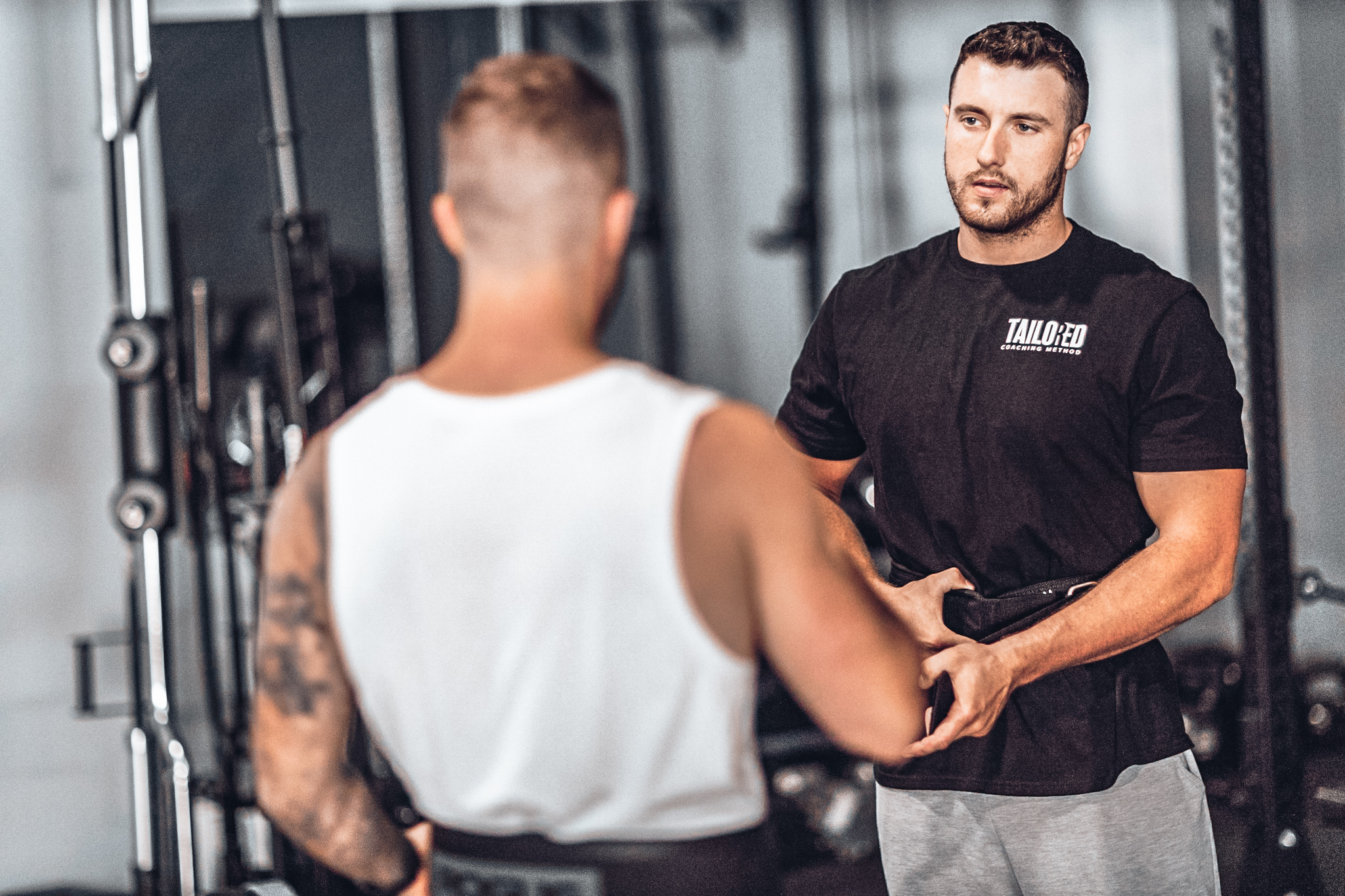
When performing cluster methods, there are 3 things to consider: Intensity (Load Used), Rest Periods (Between Clusters and Sets), and Volume (Reps and Sets).
The table below will break down each of those aspects for you and then to follow that I will give you some specific examples of different programming Cluster Sets for both Strength and Hypertrophy.
|
Intensity (Load Used) |
Intensities used for clusters are going to range from 70% to 95% of your 1RM. You will determine your estimated intensity by a % of your 1RM, however I suggest you focus more on staying within range of that target while using the RPE or RIR scale to better gauge your effort for that given day.
The range of 70% to 95% will be based on your goals. If you’re doing clusters for strength, it will be closer to 95%. If you’re doing clusters for hypertrophy, it will be closer to 70%. This is because you’re going to be doing more or less volume, depending on the goal. This will be shown in the programming section of this article. Lastly, I recommend leaning towards strength 75% of the time regardless of what your main goal is. Clusters are more beneficial, in terms of all the prior benefits explained, when lifting with submaximal loads and when the percentage drops too much – we lose some of those benefits. |
|
Rest Periods (Between Clusters) |
Rest periods between clusters will always be between 10-60 seconds. The most commonly used rest periods are between 15-30 seconds.
It’s suggested that you lean towards the shorter end of that range if your goal is muscle growth or to train your body to more easily recruit fast twitch muscle fibers, because you will have to re-recruit them if you rest for too long. Therefore it may be most optimal to perform clusters of 1-3 with rest periods of 10-20 seconds, in order to accomplish both strength AND hypertrophy. However, the stronger you get and the more technical the lift – back squat or clean and jerk, for example – the more likely it will be that you literally NEED the longer rest periods. So you should be basing this off the goal, the skill required for the lift, and your experience level. |
|
Rest Periods (Between Full Sets) |
Research has shown, time and time again, that longer rest periods are actually better. Rest too long, you’re bored and stiff – so don’t get carried away here.
However, we know that resting less than 2 minutes on a heavy compound lift will result in lower volumes due to higher amounts of fatigue going into each set. This happens because your body is still attempting to recover between sets when you’re jumping back under the bar, after just a minute or two. So even though most people chase the burn or listen to the old advice of “short rest periods lead to greater time under tension”, both have been proven by research as far less effective than waiting longer and lifting heavier (to accomplish more volume). All that to say, rest 3-5 minutes between your compound lifts so that you’re fresh, ready, and can hit it hard again. |
|
Volume (Reps) |
The amount of reps you’ll do in each cluster will depend on the goal you’re after, which will be explained in the programming section of this article below.
Generally clusters tend to be 1-5 reps and rarely go above 5 reps, outside of the case that you’re wave loading the clusters – i.e. 8 reps, 4 reps, 2 reps…. |
|
Volume (Clusters) |
The same advice applies to the clusters, too. It will greatly depend on what you’re trying to accomplish, but even more so based on how many reps you’re doing.
If you’re doing singles, you can only do so many before your form breaks down and you start experiencing diminishing returns. My typical advice is that the amount of clusters performed should be based on the percentage of 1RM you’re working at and how many clusters you can do, with the given reps at that percentage of your 1RM, until form starts to break. You do not want to finish on a bad rep, because that will train your nervous system to have poor function under stress and part of the benefit behind clusters is being able to perform well under stress. The amount of clusters usually ranges from 3-5 total clusters per set, most commonly. |
|
Volume (Sets) |
Total number of sets should be kept within reason, because this is the biggest predictor of overtraining (since volume contributes most to that, in the case of cluster sets training).
I will most commonly program only 3 total sets and sometimes I will even break that into 1 ramp up set and 2 very hard working sets. But my advice is to never do more than 4 total working sets of clusters. |
PROGRAM DESIGN FOR CLUSTER SETS
Now I’ll dive into some specific methods for cluster set program design into your training, so that you know exactly how to program them into each workout, depending on your specific goal or desired adaptation (strength vs. hypertrophy).
A couple things to note, first, would be periodizing them over a longer period of time (3-12 months) and how to track your progress with them over time, since it’s not as simple as just marking X weight lifted for X reps.
Periodization can seem tricky with these, but it’s essentially the same as any other program. It will depend if you’re using a simple linear periodization model, a block periodization model, or an undulated periodization model. This really only applies to strength, as research has shown periodization matters far less (if at all) for hypertrophy compared to strength – as long as you’re slowly accumulating volume over time, you’ll grow. Strength requires a more methodical approach.
But whichever periodization model you’re using, just know that you’ll still need to place the clusters where they belong. For example, in a block periodization model they can actually be placed in ANY phase of the model – however, you will want to match the volume and exercise selection with the correlating phase (accumulation, intensification, or realization). With linear models, as long as you’re starting with a higher volume (reps), that lowers over time, and increasing intensity (load) as you go – again, you can use clusters.
The most important thing to remember while periodizing clusters in, is that they’re very intense and demanding of the nervous system. So you MUST program in deloads, too.
In regards to tracking your loads, it’s simply important to note that your loads used will be specific to the cluster you’re using, too. So it’s best to track total volume, from all the clusters and sets of clusters put together, rather than one single number lifted for X reps. This is because you may start your clusters with a 5 rep set that is at a lower load then you can normally do for 5, but by the end of 3 or 4 clusters you’ve accumulated far more total volume (absolute tonnage/load) compared to when doing just a single set of 5 with that load.
Now, let’s move into programming….
Cluster Sets For Strength
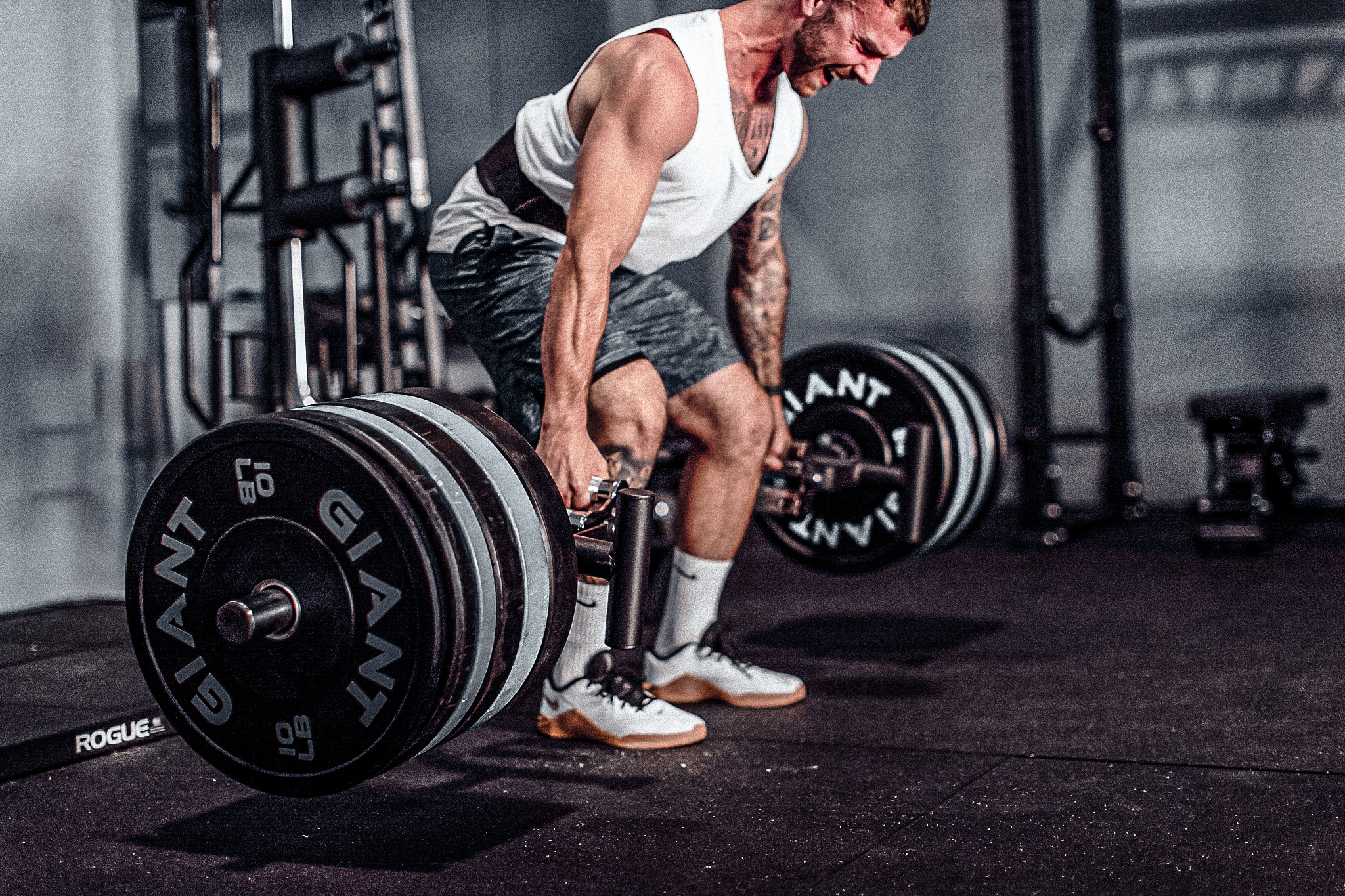
|
3 Sets x 5-3-1 Reps 10-20 Sec. Rest Between Clusters Rest 3-5 Min Between Rounds of Clusters |
This combines a classic program (Wendler’s 5/3/1), with wave loading AND clusters. You’ll choose a load that is very close to, if not at, your 5 rep max, then perform 5 reps – rest 10-20 seconds – perform 3 reps – rest 10-20 seconds – finish with 1 final rep. This allows you to practice hitting your 5 rep max under fatigue AND accomplishes more volume than you’d ever normally get with 5 reps. |
|
3 Sets x 3-3-3 Reps 10-20 Sec. Rest Between Clusters Rest 3-5 Min Between Rounds of Clusters |
One of the most well known and classic clusters for strength is the 3-by-3 method. You’ll choose a load that is 85-90% of your 1 rep max, then perform 3 reps – rest 10-20 seconds – perform 3 reps – rest 10-20 seconds – finish with 3 final reps. Your total volume is 9 reps with a load that is normally your 4-5 rep max. |
|
3 Sets x 2-2-2-2 Reps 15-30 Sec. Rest Between Clusters Rest3-5 Min Between Rounds of Clusters |
This is a great one for pure strength and anyone who needs to get more comfortable lifting heavier loads. You’ll choose a load that is ~90% of your 1 rep max, then perform 2 reps – rest 15-30 seconds – perform 2 reps – rest 15-30 seconds – perform 2 reps – rest 15-30 seconds – finish with 2 final reps. Your total volume is 8 reps with a load that is normally your 3 rep max. This is a great way to achieve “1RM results” without the extreme fatigue hitting your 1RM comes along with. |
|
3 Sets x 1-1-1-1-1 Reps 15-30 Sec. Rest Between Clusters Rest 3-5 Min Between Rounds of Clusters |
This is simply a progression or more advanced version of the method above. You’ll choose a load that is ~95% of your 1 rep max, then perform 1 rep – rest 15-30 seconds – perform 1 rep – rest 15-30 seconds – perform 1 rep – rest 15-30 seconds – finish with 1 final rep. Your total volume is 5 reps with a load that is normally your 2-3 rep max. This is a great way to work singles in with less overall recovery demands AND get used to lifting from a deadstop more often. |
**Note, these should primarily be used on compound lifts. It will generate unnecessary fatigue using it on more exercises, so keep it to one exercise per session and preferentially the one you care most about building strength with.
CLUSTER SETS FOR HYPERTROPHY
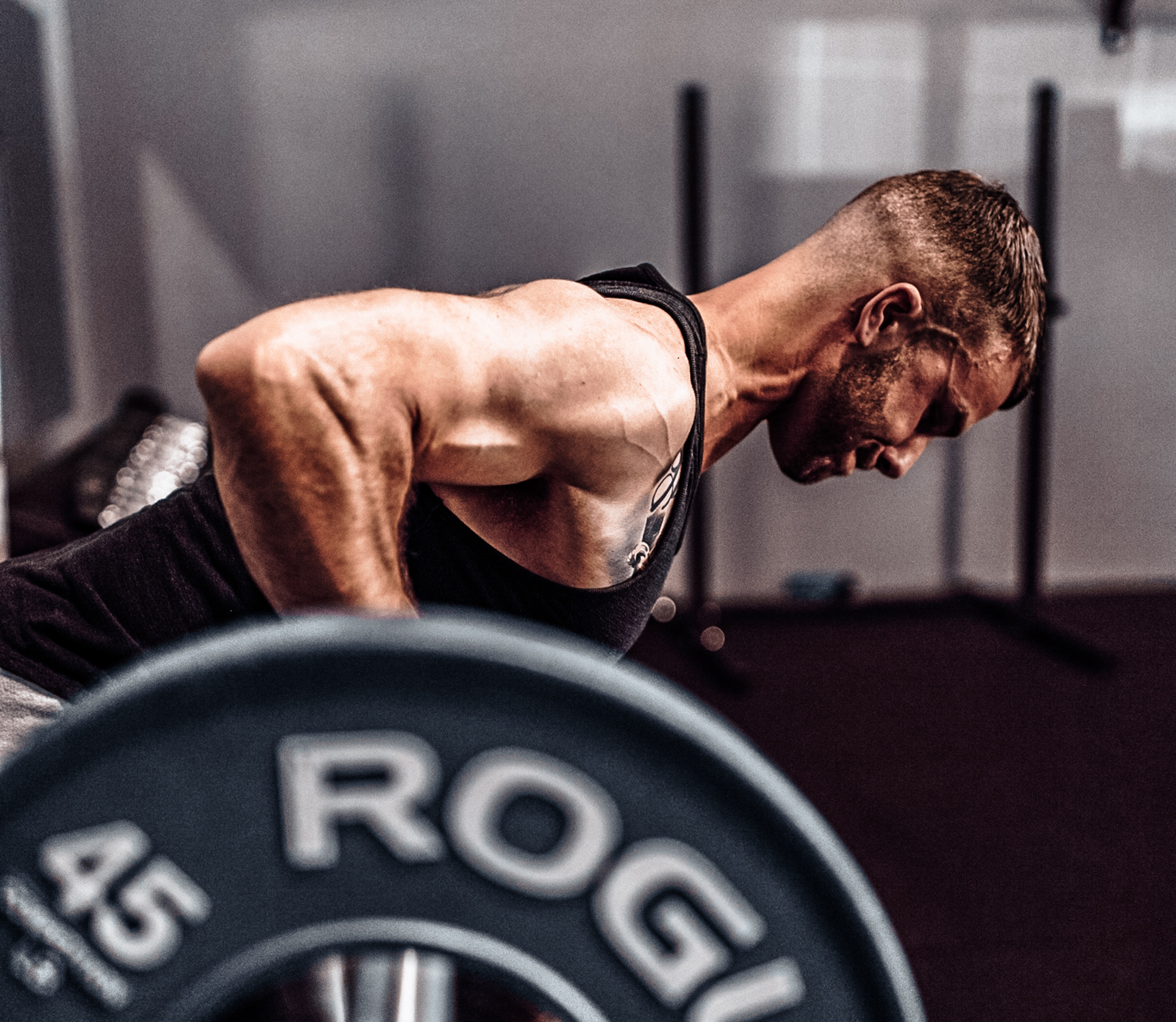
Moving into cluster sets for hypertrophy, it’s almost the exact same programming methods but with more total volume because the reps are higher (while using a lower percentage of your 1 rep max).
We will also see a difference in the rest periods, at times. The rest periods between total rounds is typically lower because we’re mainly just waiting for lactate to clear and heart rate to drop a bit, to metabolically recover. Whereas with the absolute strength clusters above, you’re also recovering neurologically to a much greater degree.
|
3 Sets x 10-8-6 Reps 15-30 Sec. Rest Between Clusters Rest 2-4 Min Between Rounds of Clusters |
This looks like a declining rep pyramid, because in a way it is. You’re simply taking short rest intervals between them, so that you can accomplish a.) more volume with a heavier load and b.) continue to maintain time under tension per round. You’ll choose a load that is somewhere between your 12-15 rep max, then perform 10 reps – rest 15-30 seconds – perform 8 reps – rest 15-30 seconds – finish with 6 final reps. You’ll get a total of 24 reps per round, accomplishing more volume with heavier loads and a greater time under tension. |
|
3 Sets x 12-6-3+ Reps 15-30 Sec. Rest Between Clusters Rest 2-4 Min Between Rounds of Clusters |
Similar to the above, with the main difference being we’re chopping the reps in half each cluster. This means you will start with your 12 rep max still and hit more reps on the first set. You’ll perform 12 reps – rest 15-30 seconds – perform 6 reps – rest 15-30 seconds – finish with 3 final reps, unless you can get more. Your total volume is at least 21 reps with a load that is normally your 12 rep max. The reason we program “3+” for the last cluster is to test your load prescription. If you can accomplish more than 3 by 2 or more reps, you likely need to increase the load you’re using. These first two clusters are for you if “pure size” is your goal. |
|
3 Sets x 5-5-5 Reps 10-20 Sec. Rest Between Clusters Rest 2-4 Min Between Rounds of Clusters |
This is a great one to combine strength and hypertrophy. I’d consider this the Ultimate Powerbuilding Cluster, because you will build strength without a doubt BUT it accumulates volume really well (for muscle growth). You’ll choose a load that is ~80% of your 1 rep max, then perform 5 reps – rest 10-20 seconds – perform 5 reps – rest 10-20 seconds – finish with 5 final reps. Your total volume is 15 reps with a load that is normally your 6-7 rep max. If you want strength and size, this is your cluster. |
|
4 Sets x 6-6 Reps 10-20 Sec. Rest Between Clusters Rest 2-4 Min Between Rounds of Clusters |
Like the above, this is another great one to combine strength and hypertrophy. We’re using 6’s, which is on the outer edge of the strength zone and inner edge of the hypertrophy edge. You’ll choose a load that is ~75% of your 1 rep max, then perform 6 reps – rest 10-20 seconds – and perform 6 more reps. Your total volume is 12 reps with a load that is normally your 8 rep max. If you want strength and size, this is another good cluster for you. |
CONCLUSION: CLUSTER SETS
At the end of the day, cluster set training is not better than straight sets by any means. At times it can be, though. But I’ll also say that at other times, it won’t be.
The reality of these, amongst all the other programming methods that you can use in your training programs, is that they’re all just different brushes to paint your portrait with. Because truly, program design is an art.
So use these to spice things up, challenge yourself, break through plateaus, and simply have fun in the gym again!
But don’t take them lightly… because they’re brutal!

